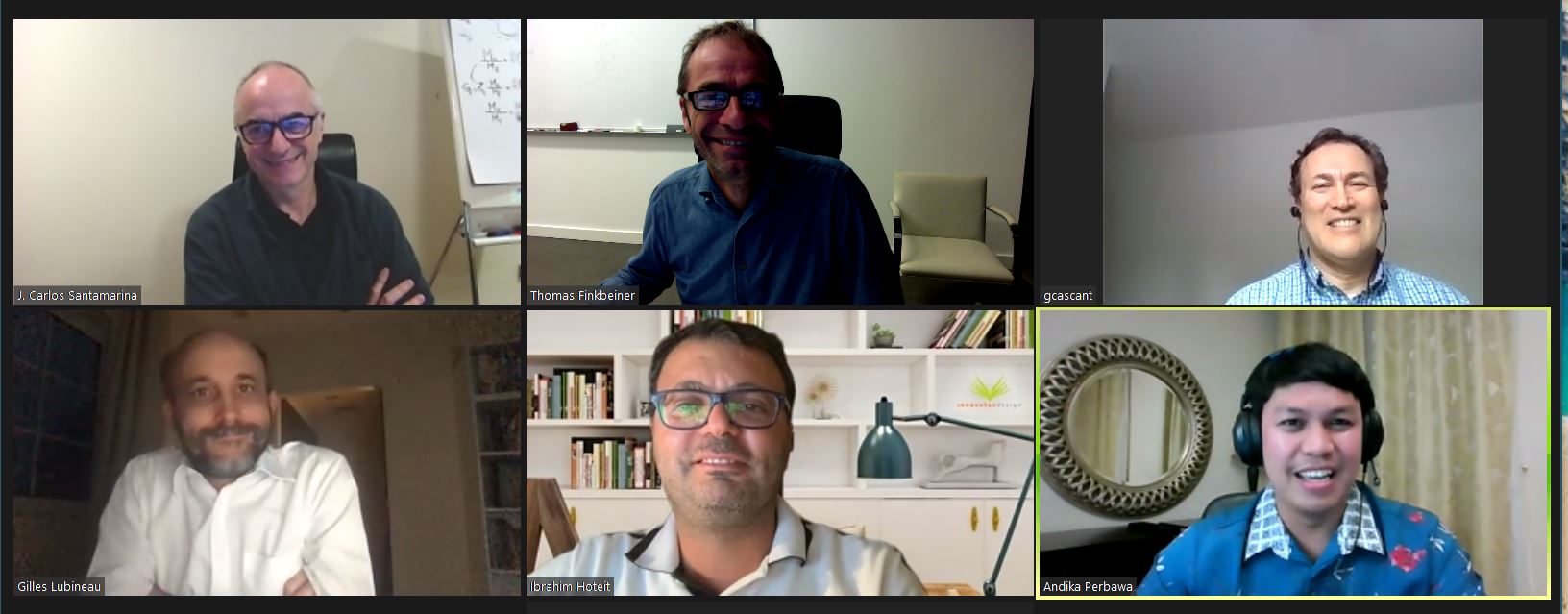24 February, 2021
Congratulations to EGEL group member, Andika Perbawa who successfully defended his Ph.D thesis, Broadband Elastic Wave Propagation in Intact Rocks on February 17. His Committee members included Dr. Ibrahim Hoteit, Dr. Gilles Lubineau, Dr. Thomas Finkbeiner, Dr. Giovanni Cascante (University of Waterloo, Canada) and Dr. Santamarina.
Abstract: Elastic wave propagation in saturated porous rocks reflects the fluid and mineral stiffness and their frequency-dependent interaction. Seismic imaging and borehole measurements in the field use low-frequency, long-wavelength signals (Hz-to-kHz), while standard laboratory-measurements operate in the MHz range. This thesis advances broadband elastic wave propagation methods (quasi-static, cyclic loading, first-mode resonance, and ultrasonic) to characterize intact rocks in order to gather laboratory data relevant to field conditions. Results show the critical effect of surface roughness at the specimen-endcap interfaces on stiffness measured under quasi-static conditions; seating effects require local strain measurements using specimen-bonded strain gauges. Multi-mode, low-frequency resonant column testing provides the most reliable assessment of attenuation; attenuation increases and resonant frequency decreases with vibration amplitude for all vibration modes (longitudinal, torsional, and flexural). Ultrasonic P and S-wave velocities increase as a function of confining pressure and during early stages of deviatoric loading; trends follow a Hertzian power law. The corresponding α-factors and β-exponents exhibit a strong correlation with specimen type. The combination of ultrasonic measurement and coda wave analysis allows us to detect minute velocity changes during fluid invasion and damage evolution. Differences in P-wave velocity in specimens saturated with brine and supercritical CO2 are higher at seismic frequencies than in ultrasonic frequencies. The new experimental methods implemented in this research and the comprehensive characterization studies provide new tools into intact rock characterization and contribute new insights on the physical properties of intact rocks and fluid-matrix interaction. Results highlight critical differences between field values and standard laboratory measurements.
